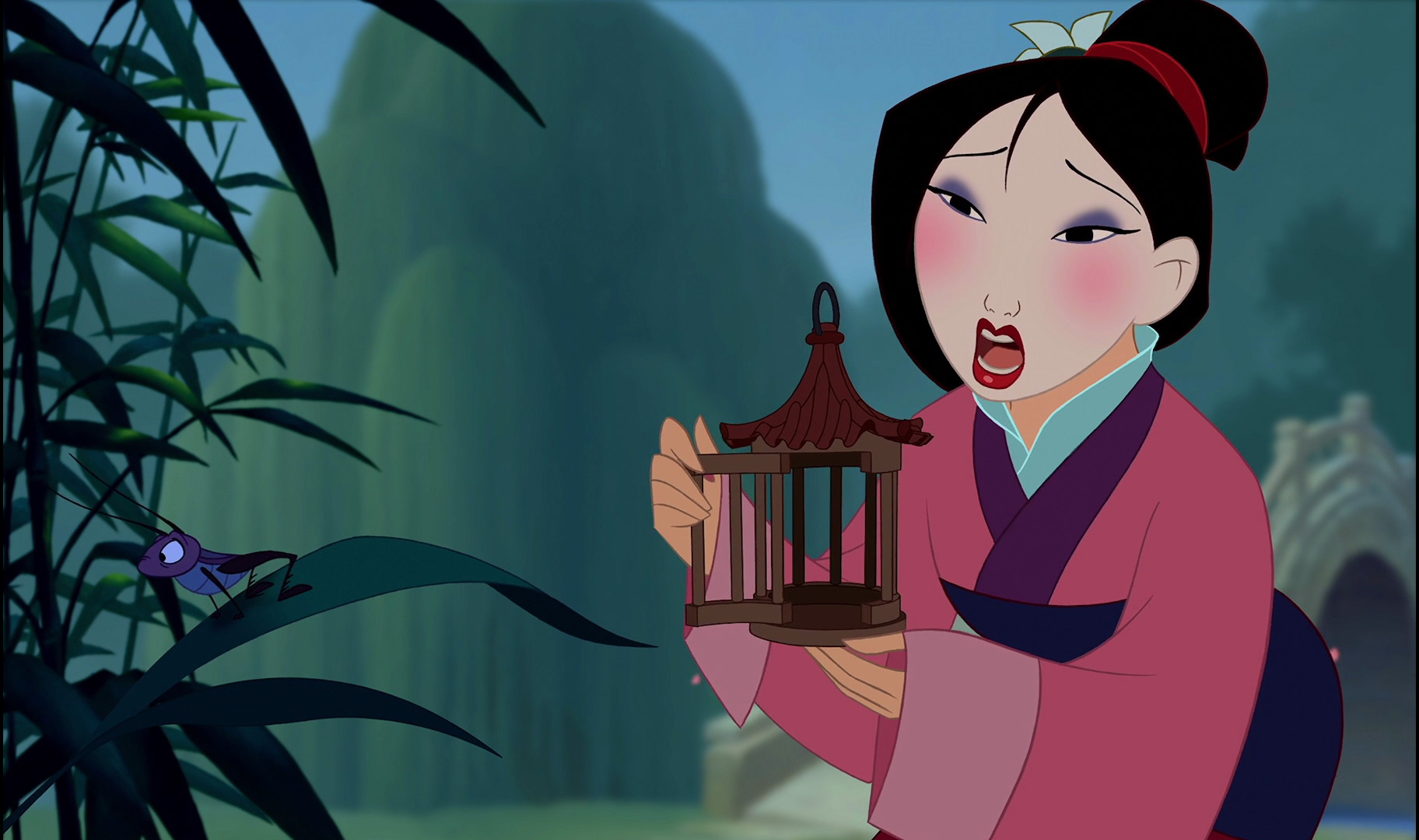
It is when she stops trying to shape herself to her environment, but to shape her environment to fit her.

It is when Mulan sees, in the mirror-bright surface of her sword, the creative solution to the Hun attack.

REFLECTION MULAN MEANING FULL
Her profoundest reflection is neither herself in full make-up or full armor. But her inability to do so is precisely what makes Mulan so exceptional. Mulan is unique among Disney princesses in her desire to shape herself to her environment, to fit in instead of stand out. No one can achieve these ideals, particularly not Mulan, however hard she tries.Īnd she does try. But both ideal femininity and ideal masculinity are carefully manufactured. It is an external ideal Shang tries to teach his men to embody.įrom the porcelain doll to the kung fu master- two benevolent stereotypes which all Asian Americans have faced at one point or other. Manhood is not something inherent but something to be rigorously pursued and worked towards. “I’ll Make A Man Out of You,” like “Honor to Us All,” before it, calls attention to the hard, performative work of gender. But to say Mulan defies this unreachable external ideal because she is, at heart, her male alter ego, is a disservice to her. The first reflection Mulan sees in the film is one Asian American women have to see every time they look for themselves in pop culture: the “perfect porcelain doll,” calm, obedient, hard-working… and so obviously manufactured. Lacan suggests that we all, as children, go through a process where we identify the self externally, where we see our reflections and are told, “That’s you!” This isn’t the true self, of course, but it serves as an ideal self, a unified self, towards which we strive our whole lives.
REFLECTION MULAN MEANING MOVIE
It is perhaps unsurprising that one image from the movie which was stuck on posters, pillows, and merchandise everywhere took on a profound significance to me: Mulan, her face bisected by her sword, with her soldier alter-ego reflected in its rippling surface. But still, I tried my best to accept the role allotted to me, to behave as I thought I ought, in a world where that seemed increasingly out of place. It always puzzled me why my maternal family should like being part of it when, after the female pastor left, women seemed to be locked into lower-ranking roles with no hope of advancement. My mother and grandmother attended the nondenominational Chinese Community Church of DC, an organization which brought me little pleasure, combining as it did the worst of evangelical Christianity with the worst of Confucianism. It always seemed fitting to me that I first saw Mulan as part of a church youth group outing. Mulan is Asian American film, one that simply and beautifully captured the struggle of wanting to fit into a role demanded by our families- a role that did not answer the problems brought upon us by the society in which we now found ourselves. China is the mythical place of our ancestors, a land that supplies the old values against which we rebel, and yet created the ties which- like a growing plant- both constrain and train our inner lives.
But the fictional China is the one that exists in my mind-and, I think, in the minds of a number of second, third, and fourth generation Chinese Americans. The culture painted onscreen bears little resemblance to the actual country in which people live. By this I mean: the China of my imagination.

I visit the almost mythical place that supplied the quipaos preserved in my mother’s plastic dry-cleaner bags, and the dragons carved out of jade locked away in my grandmother’s shadowbox.
REFLECTION MULAN MEANING HOW TO
From the first brushstrokes, creating the imaginary landscape I’d quickly given up on learning how to paint at Chinese summer camp, I am always enraptured. It serves as a comforting touchstone, the fictional mirror in which I can always look and find some aspect of myself. Header image: “ Mulan Painting” by Sam Howzit.ĬC BY Mulan has followed me from elementary school, through college, and well into early adulthood.


 0 kommentar(er)
0 kommentar(er)
